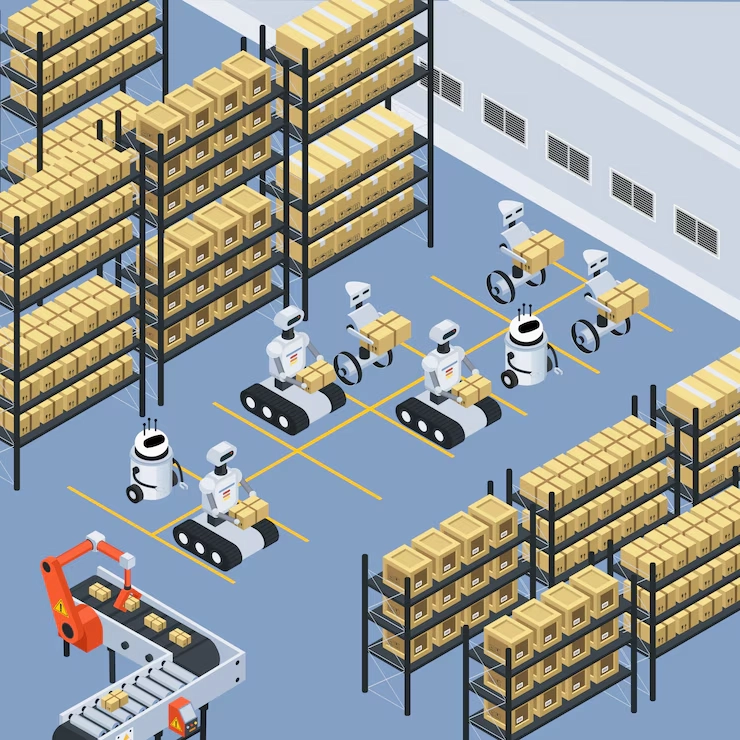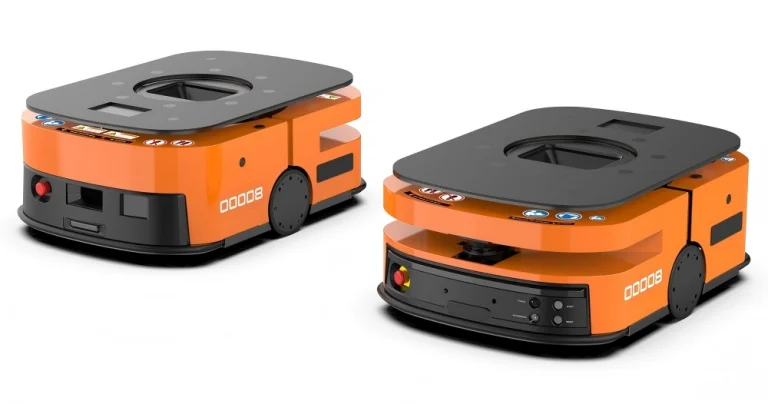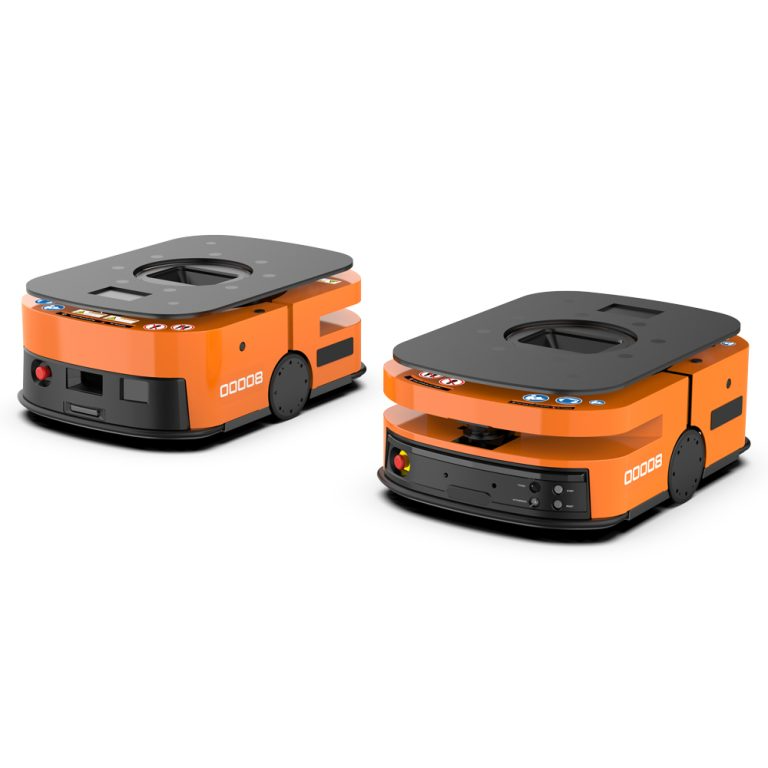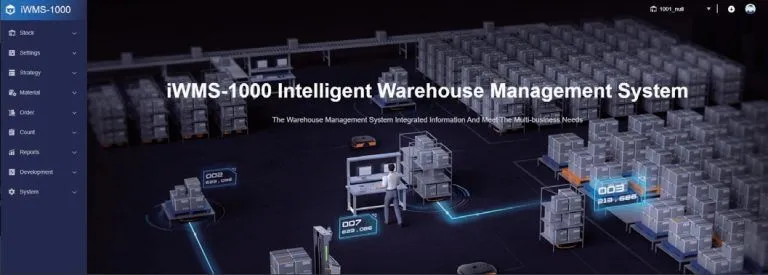Automated Guided Vehicles (AGVs) and Autonomous Mobile Robots (AMRs) change how warehouses work. This article compares their features, movement methods, and benefits in busy settings. Learn how WESAR provides dependable AGV solutions. They help improve your warehouse tasks.
What Are AGVs and AMRs?
Defining Automated Guided Vehicles (AGVs)
Automated Guided Vehicles (AGVs) are machines that move items in warehouses. They follow set paths. These paths use markers like magnetic tape or wires in the floor. AGVs are great for repeating tasks, like carrying pallets to fixed spots. Their planned movement works well in steady places. However, they struggle with sudden changes.
Defining Autonomous Mobile Robots (AMRs)
Autonomous Mobile Robots (AMRs) are smart machines. They move on their own without fixed paths. They use sensors, cameras, and clever software to understand their surroundings. AMRs adjust to changes quickly. They do jobs like picking orders or moving stock. Their flexibility suits busy, changing warehouse setups.
Key Features and Technologies of Each System
AGVs and AMRs use different tools to work. AGVs follow set guides, like magnetic tape or laser markers. They stick to planned routes. They have simple sensors to spot obstacles. This makes them good for steady, repeating jobs. AMRs use advanced sensors, like laser scanners or cameras, to move freely. They create maps of the warehouse as they go. They also use smart software to plan routes instantly. This helps them handle many tasks in changing spaces. These differences decide how each system works in warehouses. Check out WESAR’s solutions for modern options.
How Do AGVs Navigate Complex Warehouses?
Navigation Methods Used by AGVs
AGVs use planned systems to move in warehouses. These methods keep them accurate but limit their ability to change.
Fixed Path Guidance Systems
AGVs often follow marked paths. Magnetic tape or wires in the floor show the way. Some use laser markers to find their position. These systems ensure steady, repeating routes. They work well in fixed places like factories. But changing the path needs new markers. This can slow down work.
Sensor-Based Navigation
AGVs have sensors to stay safe. Sound or light sensors spot nearby objects. This makes AGVs stop or slow down. Some use laser scanners for better accuracy. These sensors help with basic movement. However, they don’t understand the whole space well. This makes AGVs less suited for fast-changing setups.
Limitations of AGV Navigation in Dynamic Environments
AGVs face problems in busy warehouses. Their set paths are hard to change. Adjusting them costs time and money. They also struggle with sudden obstacles or new workflows. Their planned routes slow down quick decisions. This makes AGVs less helpful in warehouses that change often or have many different items.
How Do AMRs Navigate Complex Warehouses?
Advanced Navigation Techniques in AMRs
AMRs use smart tools to move easily in busy spaces.
Simultaneous Localization and Mapping (SLAM)
AMRs use a method to build and update warehouse maps as they move. They rely on laser scanners and cameras. These help them know where they are and what’s around them. This lets AMRs move without set paths. They handle obstacles or changes right away. This method ensures accurate movement in crowded or changing warehouses.
Artificial Intelligence in Route Planning
Smart software helps AMRs choose the best paths. It looks at warehouse details, like busy areas or job priorities. This picks the fastest routes. AMRs change paths quickly to avoid delays. This clever planning makes them great for warehouses with lots of changes, like online shopping centers.
Advantages of AMRs in Adapting to Changing Warehouse Layouts
AMRs do well in changing spaces. They adjust to new setups without changing the warehouse. They start working quickly because they don’t need fixed guides. Businesses can add more AMRs easily as needs grow. These benefits make AMRs a strong choice for busy warehouses.
What Are the Key Differences Between AGVs and AMRs?
Flexibility and Scalability in Operations
AGVs stick to set routes. This makes them less flexible. Changing warehouse setups means redoing paths. This takes time and money. AMRs move freely. They adapt to changes right away. This makes AMRs easier to expand. Businesses can add more AMRs without changing the warehouse. AMRs handle busy times well. AGVs are better for steady, repeating tasks.
Cost Implications of Deploying Each System
AGVs cost less at first. Their simple tools are cheaper. Setting them up involves adding tape or wires. This is affordable but takes effort. AMRs cost more to start. Their advanced sensors and smart software raise the price. But AMRs save money over time. They don’t need path changes and use less worker time. Businesses with changing needs find AMRs more cost-saving in the long run.
| Aspect | AGVs | AMRs |
| Starting Cost | Lower (basic tools) | Higher (smart sensors, software) |
| Flexibility | Low (set paths) | High (free movement) |
| Long-Term Savings | Fair (path change costs) | Great (adaptable, expandable) |
Safety Features and Risk Mitigation Strategies
AGVs use simple sensors to avoid crashes. But their set paths can cause risks in busy spaces. AMRs have better safety tools. They use full-circle laser scanners and instant obstacle detection. AMRs change paths to avoid workers or machines. This lowers accident risks. Both systems need regular checks to keep sensors working. AMRs’ smart movement reduces human mistakes more.
Why Choose WESAR?

Overview of WESAR’s Expertise in AGV Technology
WESAR is a top provider of AGV solutions. They focus on warehouse automation. With many years of experience, WESAR builds strong, efficient AGVs for busy spaces. Their focus on new ideas and quality ensures steady performance. This makes them a trusted partner for delivery, manufacturing, and online sales businesses.
Benefits of Partnering with WESAR for Warehouse Automation Solutions
Working with WESAR brings many benefits. They offer AGVs built for specific warehouse needs. Their machines use smart navigation and connect to warehouse software. WESAR provides dependable help with maintenance and support. Their systems grow easily to meet bigger demands. WESAR’s AGVs improve work speed and adaptability. Contact WESAR via their contact page for custom automation solutions.
Conclusion
AGVs and AMRs offer different ways to move in warehouses. AGVs are great for steady, repeating jobs. AMRs provide flexibility for changing spaces. Knowing their differences helps businesses pick the right system. WESAR’s dependable AGV solutions help warehouses work better. They keep businesses strong in a fast-changing industry.
FAQs About AGVs and AMRs
What types of warehouses benefit most from using AGVs or AMRs?
AGVs help factories with fixed tasks. AMRs suit online sales and retail warehouses with changing setups. Both improve work in high-density storage spaces.
Can AGVs and AMRs be integrated into the same warehouse system?
Yes, AGVs and AMRs can work together. AGVs handle repeating tasks. AMRs manage flexible jobs. They need matching software to work smoothly.
How do I decide whether to implement AGVs or AMRs for my operations?
Look at your warehouse needs. Pick AGVs for steady tasks and lower costs. Choose AMRs for changing setups and long-term savings. Ask WESAR for expert advice.









